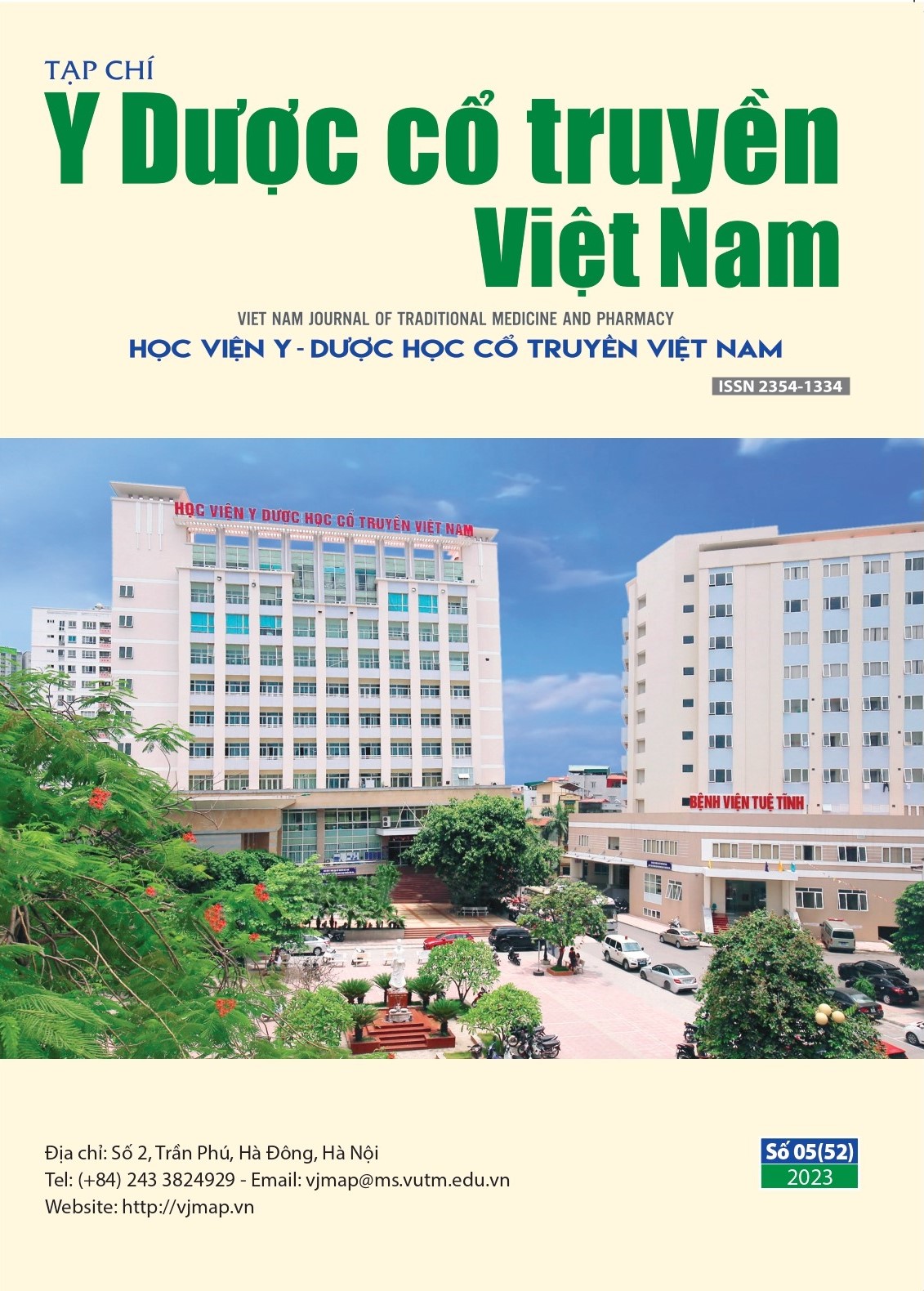Đánh giá hiệu quả của điện châm kết hợp laser nội mạch trong điều trị rối loạn giấc ngủ thể can uất hóa hỏa
Main Article Content
Abstract
Objectives: To evaluate the effectiveness of electro-acupuncture combined with intravenous laser blood irradiation in the treatment of liver fire flaming upward insomnia at Nghe An General Friendship Hospital in 2022 and monitor the unwanted effects of the method.
Subjects and methods: A controlled clinical intervention study design, compare results before and after treatment. Choose a convenient sample size, the number of 60 patients divided into 2 groups: 30 patients in the control group, 30 in the study group.
Results: Evaluation of the effect of improving sleep according to the Pittsburgh scale: Sleep duration after 15 days of treatment in the control group was 5.4±0.72 hours; in the study group was 6.46 ± 0.97 hours with p<0.01. Time to fall asleep after 15 days of treatment in control group was 42.53±13.2 (minutes), in the study group was 23.4±7.92 with p<0.01. Sleep efficiency after 15 days of treatment of the control group was 71.1±5.39 %; the study group 78±5.38 increased by 6.9±5.38% with p<0.01. Total PSQI score after 15 days of treatment of the control group 8.20 ± 2.28 in the study group was 5.06 ± 1.94 points with p<0.01. The general treatment results after 15 days: the control group did not have erectile dysfunction 13.3%, and the control group had 86.7%; The study group with no sleep disorder was 83.3%, and the sleep disorder was 16.7%, with p<0.01.
Conclusions: The secondary symptoms of insomnia were gradually improved and returned to normal with p<0.05. This is a safe method, does not affect liver, kidney and hematopoietic functions. Disturbances in sleep and disturbances during the day were improved.
Article Details
Keywords
Sleep disorder, intravascular laser blood irradiation, insomnia.
References
2. Taylor D., Gehrman P., Dautovich N.D., et al. Handbook of Insomnia, Original text. Springer Healthcare Communications, 2014.
3. Bộ môn tâm thần học và tâm lý học y học - Học viện Quân Y. Tâm thần học và tâm lý học. Tâm thần học và tâm lý học y học, Nhà xuất bản Quân đội Nhân Dân, Hà Nội, 2007, tr. 228.
4. Nguyễn Nhược Kim, Nguyễn Thị Thu Hà. Thất miên. Nhà xuất bản Y học, Đại học Y Hà Nội. 2016. tr. 215–225.
5. Moskvin SV. Low-Level Laser Therapy. "Western School" vs "Eastern School". J Lasers Med Sci, 2021 Oct 20, 12:e66, doi: 10.34172/jlms.2021.66, PMID: 35155151, PMCID: PMC8837864.
6. Bùi Quang Huy. Giấc ngủ bình thường. Rối loạn giấc ngủ. Nhà xuất bản Y học, 2016, tr.7-13.
7. Đặng Vũ Hoàng. Laser y học và vấn đề an toàn. Luận án thạc sỹ, Phân viện Vật lý Y Sinh học, 2013, tr. 20- 40
8. Đinh Danh Sáng. Đánh giá tác dụng cải thiện giấc ngủ của nhĩ châm trong điều trị bệnh nhân rối loạn giấc ngủ theo thang điểm Pittsburgh. Luận văn Thạc sĩ Y học, Đại Học Y Hà Nội, 2016, tr. 47-52.
9. Bộ Y tế. Hướng dẫn sử dụng Bảng phân loại thống kê Quốc tế về bệnh tật và các vấn đề về sức khỏe có liên quan phiên bản lần thứ 10 (ICD10). 1, 2015, tr.193–195, 241.
10. Chang Yuan Ling, Chang Shin Tsu. The effects of intravascular photobiomodulation on sleep disturbance caused by Guillain-Barré syndrome after Astrazeneca vaccine inoculation: Case report and literature review. Medicine (Baltimore), 2022 Feb 11, 101(6):e28758, doi: 10.1097/MD.0000000000028758, PMID: 35147100, PMCID: PMC8830854.

